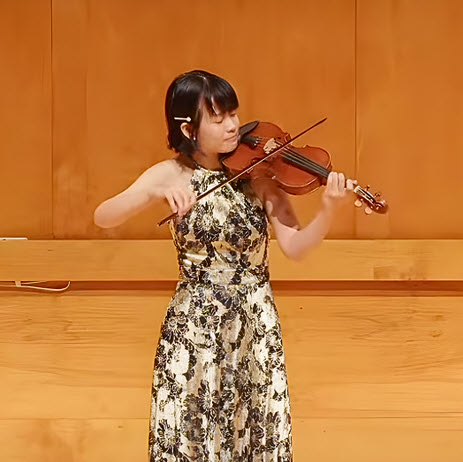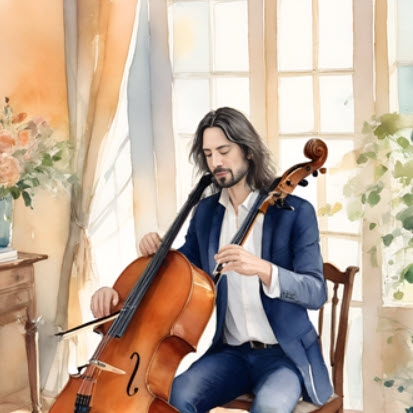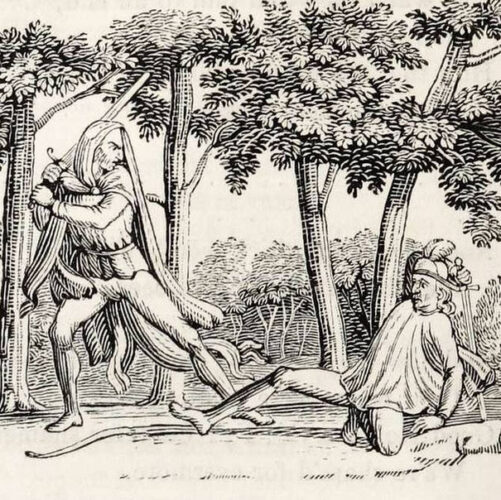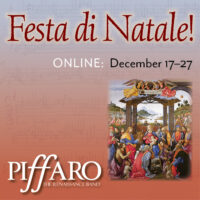by Mira Fu-En Huang
Published May 18, 2025
Editor’s note: The ensemble Magdalena was among the outstanding performers at the 2024 EMA Summit, part of EMA’s Emerging Artists Showcase — an invaluable platform for connecting early music’s rising stars with new audiences and presenters. Several recent Showcase winners will perform at the Boston Early Music Festival on Wednesday, June 11, at 11am. The concert is free; find details here.

In the summer of 2022, lutenist Cameron Welke and I were carpooling back from New York after a whirlwind weekend of performing and recording with our friends, lutenist Cole Manel and recorder player extraordinaire Sarah Shodja. After an unforgettable few days of music-making, the four of us were determined to make whatever we were into an official ensemble. Cameron and I brainstormed on what we might want to name ourselves: something universal, something easy to pronounce and spell, something memorable, something with a touch of early-music flair. At the time, I was transcribing music by Maddalena Casulana, the first woman in Western history to publish music under her name, so I threw out “Magdalena,” and that became our placeholder.
Later, the four of us hopped onto a Zoom call with our fifth member, harpist Liv Castor, to decide our name once and for all. We created a Google doc with more than 25 candidates, each more niche and unpronounceable than the last. As the conversation became more convoluted, Cameron eventually asked, “Can we just accept our arranged marriage with Magdalena?” Sarah then took our top four candidates, including Magdalena, to her non-musician husband, waited a day, then asked him which he liked most. Of all the candidates, Magdalena was the only one he remembered. And thus our ensemble was named.
Our stumbling upon Magdalena was rather serendipitous, but the name has come to represent us in the best way possible. Originally an Ancient Greek and Hebrew name meaning “woman of magdala,” or “woman of the tower,” Magdalena has traveled across countries and centuries to the present day, where its diminutive, Madeleine, is most prevalent. It’s a name that represents multiple eras and cultures, which perfectly parallels the interests of our ensemble.
Our final lineup has six members, with bowed strings expert Niccolo Seligmann officially being added to the group in 2024, and although we are all trained in historical performance at Baltimore’s Peabody Conservatory, we each hold a wide breadth of interests and specialties. We’ve talked about adapting various types of folk genres for our ensemble — most notably trad, or traditional Irish and Scottish music. We’ve also talked about Medieval programs, Renaissance programs, Baroque programs, and even a potential program that adapts Romantic-era art songs for period instruments. Our ensemble’s interests and ideas extend incredibly far, and the wide reaches of the name Magdalena reflect that.
The array of musical interests we hold also marks the origin of our concert program, “The Women of Magdala.” When I first told Liv that I’d originated Magdalena from Casulana, she told me she’d assumed the name had come from Anna Magdalena Bach. This raised the question: Aren’t there other incredible figures named Magdalena across history? What if we devised a program that paid homage to them all, while also playing to our strengths and passions?
Our “The Women of Magdala” program is divided into multiple sets, each following a woman named Magdalena or a related diminutive. Each set features a reading of historical fiction depicting the Magdalena’s life, then launches into music that sonically represents the story. We chose to add a narrative element to the program, partially to give the vastly varying sets a thematic through-line, and partially because our members have expressed an interest in storytelling. (I love creative writing, so jumped at the chance to contribute some historical fiction to the program.)
As it stands, “The Women of Magdala” is not complete — in fact, it may never be complete, as our ensemble’s interests grow and we continue adding new sets to its lineup. Nonetheless, we were thrilled to present our first iteration of the program at Early Music America’s Emerging Artist Showcase in October, 2024 in Cleveland. For this initial performance, we built sets around two Magdalenas for our audience to follow.
Liv, our resident trad expert, masterminded our first set. The Magdalena in question was a fictional character that Liv and I created, Madaléin ní Cheallaigh, who paid homage to the story of Irish immigration to Scotland that occurred in the 1600s and beyond. This set featured Irish dance music; a waulking song, which is a type of labor song from Scotland; and a sean-nós, a type of ornate folk singing that hails from Ireland. We immensely enjoyed adapting these tunes for our period instruments. I loved the process of learning sean-nós, as well as learning lyric diction for Gaelic and Scottish Gaelic.
The second set was more diverse in repertoire, coming mostly from the brains of Cole and me. This set was built around Madeleine de Valois, a French princess who married the King of Scotland, but only ruled for a single summer before succumbing to tuberculosis. Musically, we told Madeleine’s story through a Notre Dame chant, as Notre Dame was where she was wed; a tragic chanson, to represent her hardship; a set of French-published Scottish bransles, to depict France’s temporary union with Scotland; and Pierre Attaingnant’s Suytte de la Magdalena, a dance suite that was technically chosen to portray Madeleine’s fiery youth but, really, was too fortuitous a title to omit.
Our ensemble has a special fondness for dance music, so we enjoyed bringing the bransles to life. Moreover, we’re proud of the way the two sets interacted, as they allowed us to showcase our versatility in different genres while maintaining a narrative through-line for audiences to appreciate.
‘“The Women of Magdala” is our titular program: a sonic representation of our ideals as an ensemble, as well as our varied skills and passions. In the future, we look forward to adding more sets to this program, and hope it will be a mainstay in our ensemble’s life for many years to come.
Mira Fu-En Huang is a Baltimore-based early- and new-music vocalist. She acts as the administrative director for Magdalena and, when not working for her day job in nonprofit administration, spends her time writing and practicing various percussion and wind instruments.




